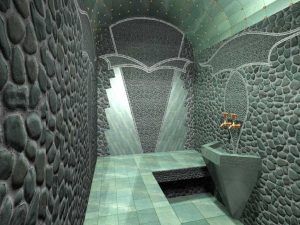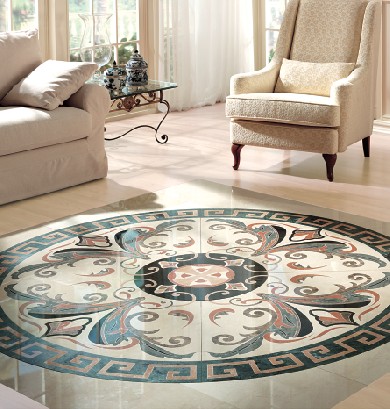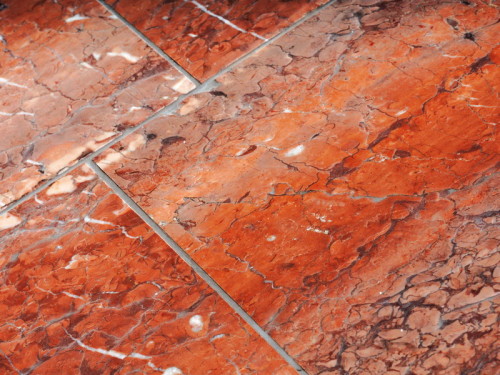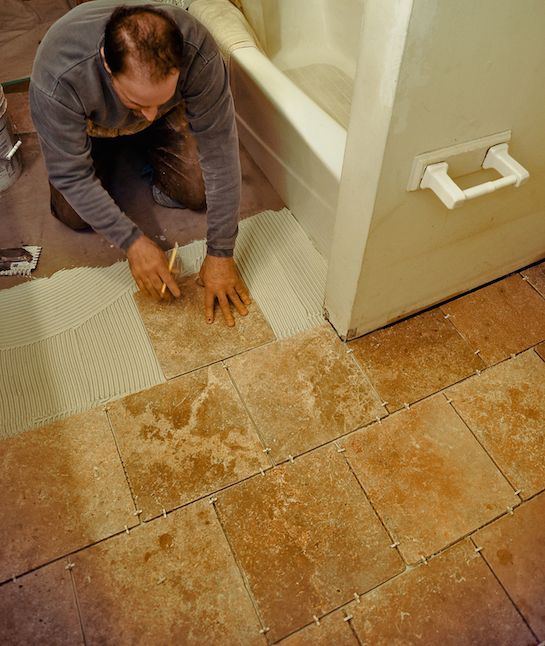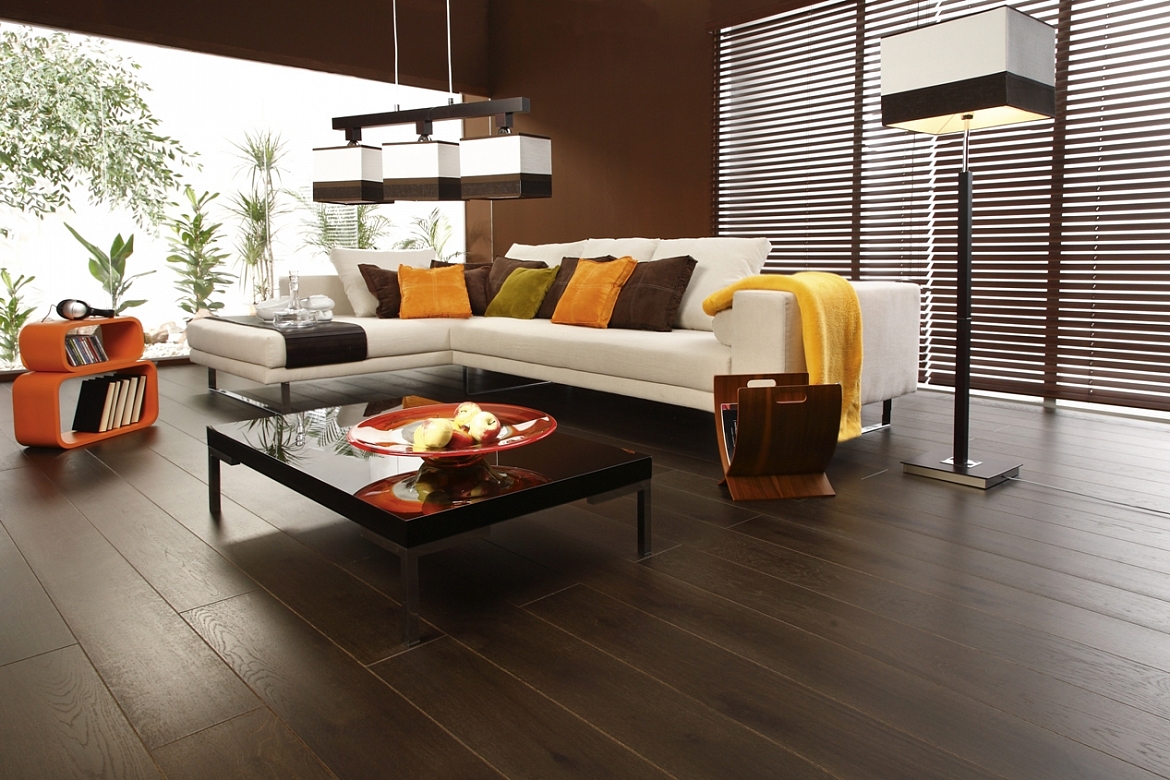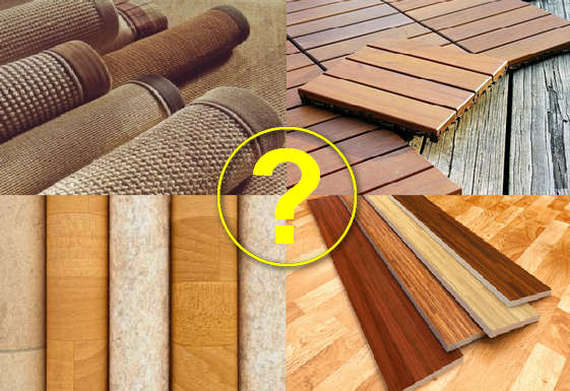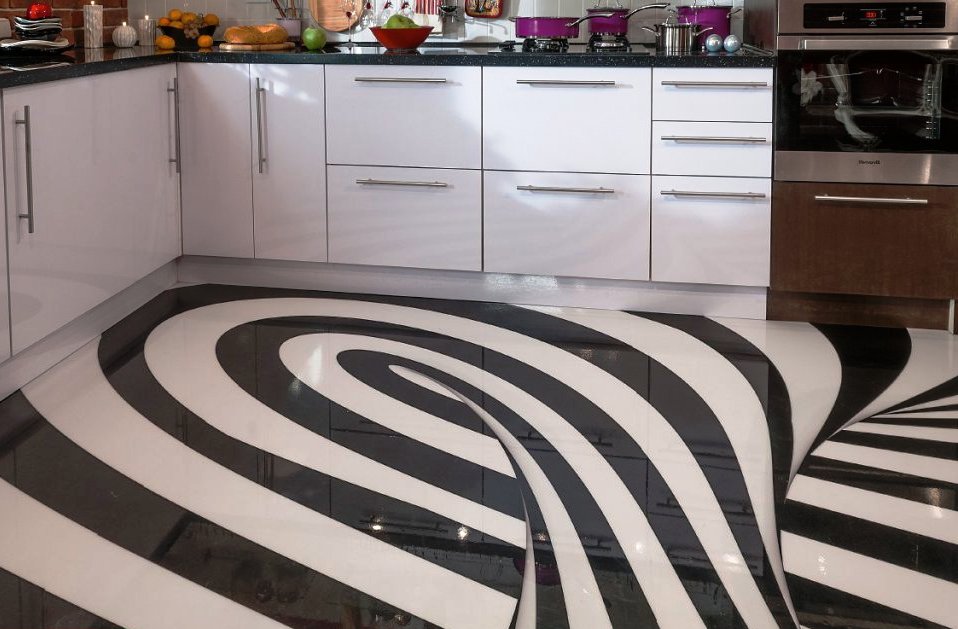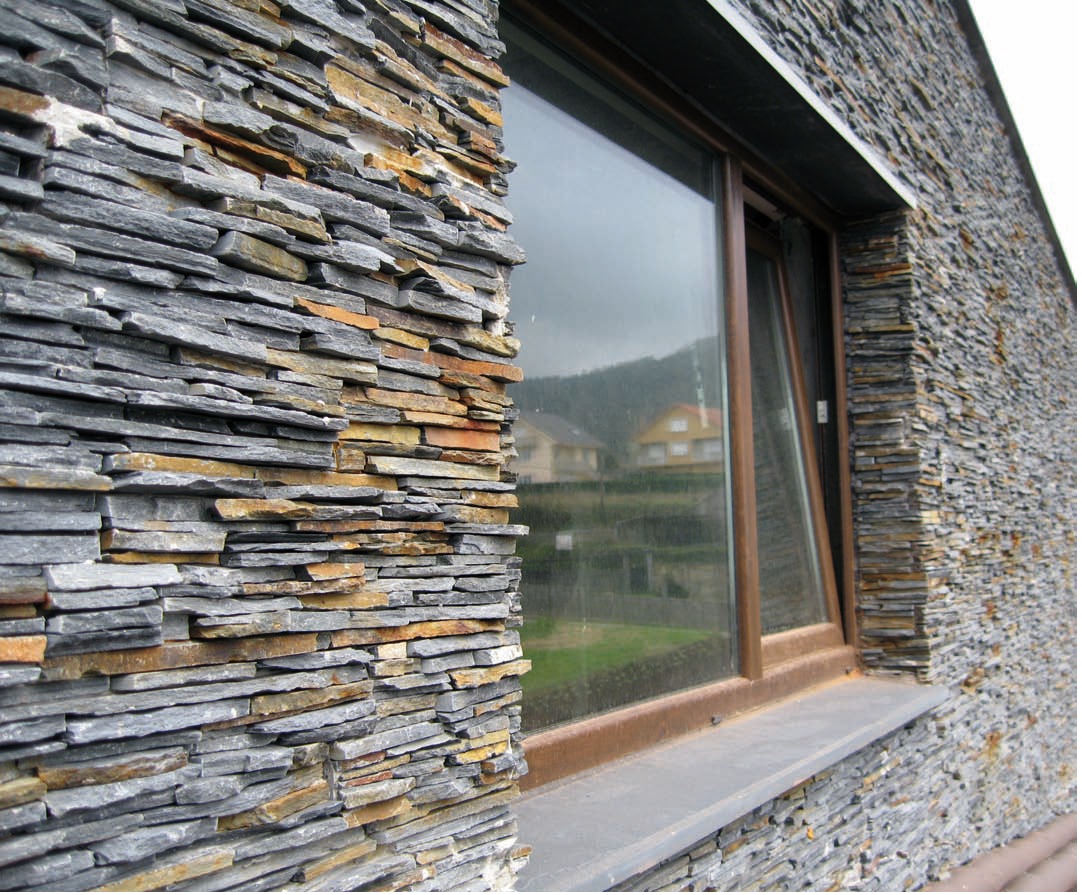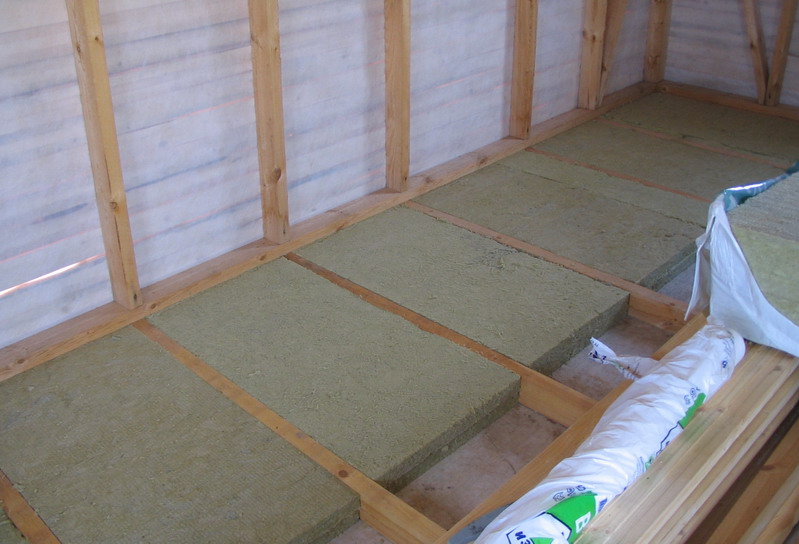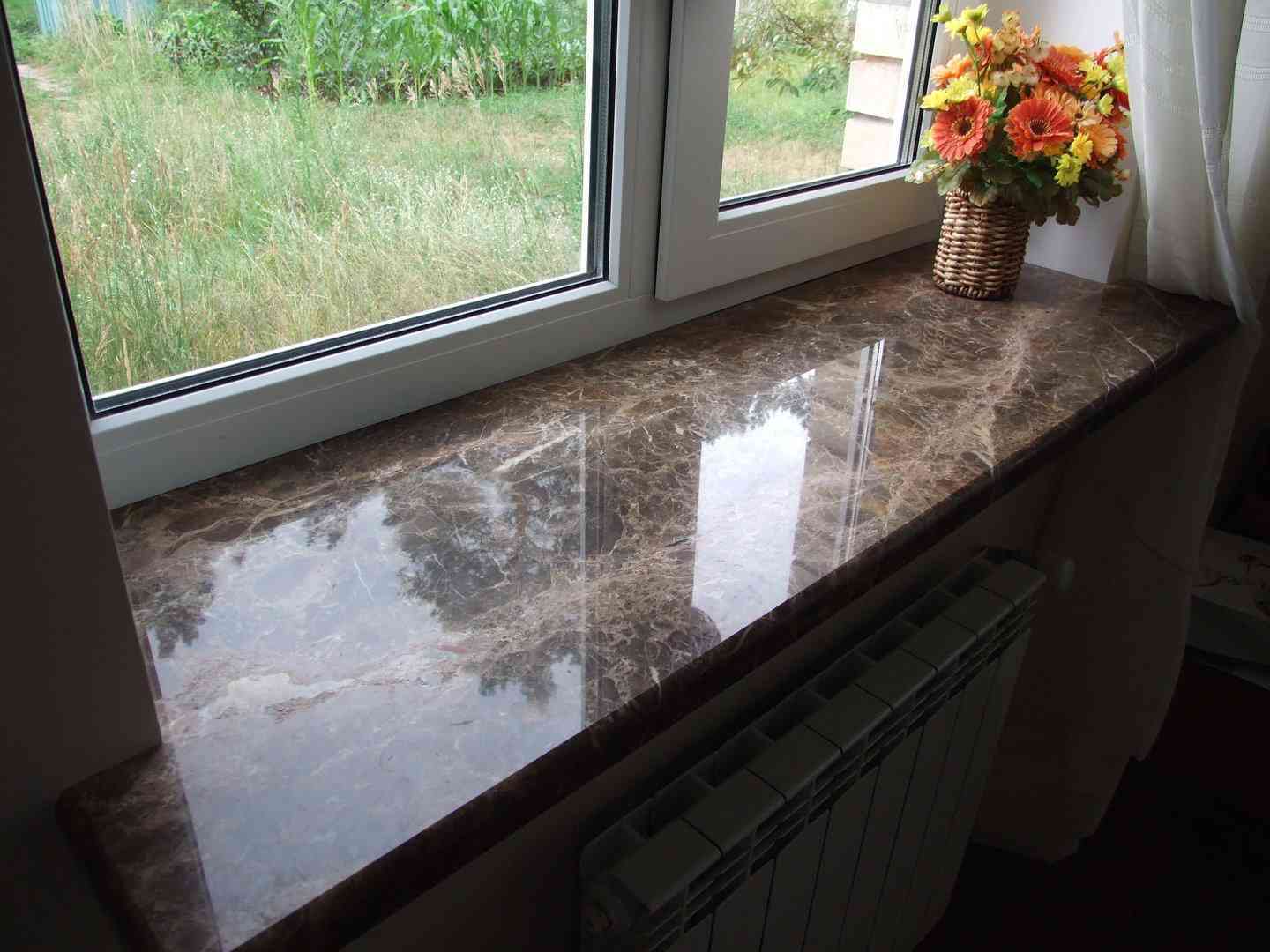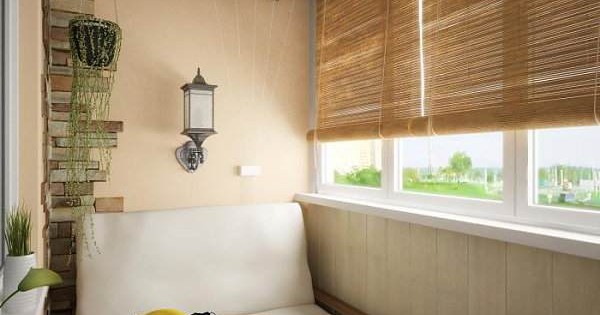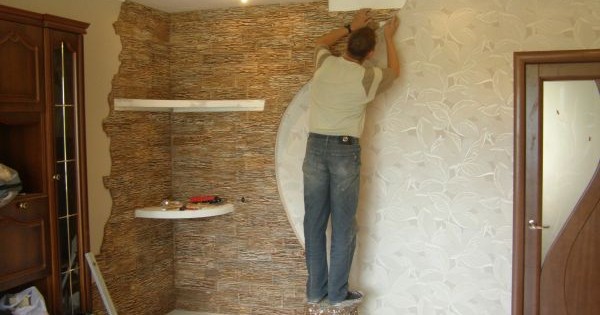Stone floor: 15 tips for flooring with artificial and natural stone
What can be stronger than a stone floor? Correct - only correctly laid stone floor. After all, not without reason in ancient times the floors in the most luxurious palaces were faced with stone. He testified of the well-being and wealth of the owner, inspired confidence and calm. Therefore, such a design of various rooms in our time is also a very subtle psychological device aimed at instilling a sense of stability and constancy. If natural stone is really a luxury that not everyone can afford, then its artificial counterpart is much cheaper, but it looks no worse. Understanding Basic Secrets floor design natural stone and its artificial counterpart, We study which breeds are more preferable and why.
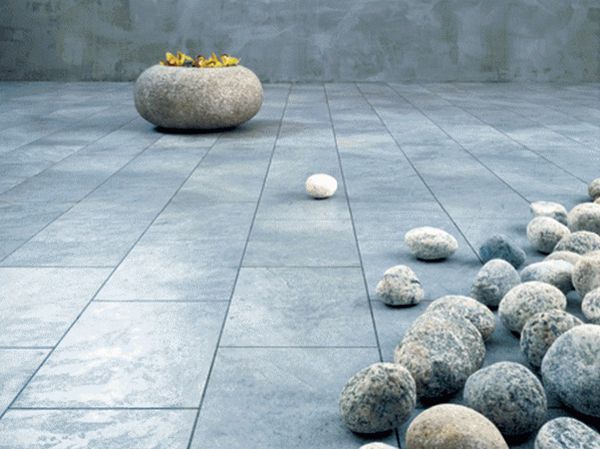
1. Stone floor: advantages and disadvantages
Those who are seriously thinking about laying a stone floor in their apartment or private house should have a certain amount of knowledge and skills in order to achieve a truly amazing result. A natural stone refers to expensive materials. But in this case, it is safe to say that you are not just spending your money, but making a significant contribution to the modernization of your home. Undoubtedly, natural stone is an inimitable material. Its shades, texture, interesting highlights and unique patterns were created by nature itself. That is why the stone is so highly regarded by designers. In addition to amazing aesthetic qualities, natural rocks have a ton of other advantages:
- This is one of the most durable and durable materials. It can be said that stone floors are truly eternal;
- The long service life is also facilitated by the maintainability of the surface. In case of chips or scratches, it is possible to quickly return the floors to their original appearance by ordinary grinding or polishing. Of course, this does not mean that you can do it yourself. But the services of specialists will be much cheaper than a complete replacement of the coating;
- The stone is in perfect harmony with any other decoration materials;
- Moreover, in a room with stone floors there will always be a special atmosphere, and the interior can no longer be called boring or uninteresting;
- You will get a coating with a truly unique hue and pattern;
- Minimum care requirements;
- Resistance to the formation and reproduction of microorganisms;
- Most rocks are resistant to moisture and chemicals.

Now consider limitations natural stone floors:
- First of all, it's their high cost;
- Considerable weight this finishing material. If we are talking about laying the floor on the first floor of a private house, then difficulties should not arise.It is worthwhile to pay more attention to the facing of the floors of the upper floors, and those who wish to arrange stone floors in an apartment of an ordinary high-rise building should think a few times, but it is better to seek the advice of professional builders or the house architect. He should tell you the permissible load on floor slabs. Also, similar information can be found in the construction standards of the relevant years;
- The stone itself is cold stuff. Perhaps you should first arrange a heating system "warm floor";
- Due to the increased hardness, all fragile objects that fall on a stone surface will certainly break;
- It is more difficult to stand on the stone floor - tiredness in the legs begins to be felt faster. This is especially noticeable during cooking.
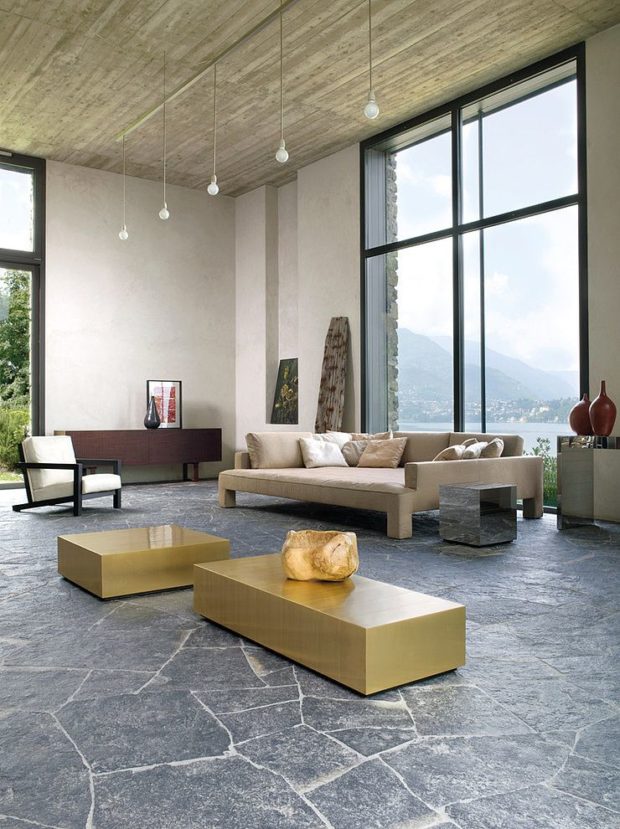
A lot of different breeds are used for laying the floor. Let's look at each of the possible in more detail and highlight its disadvantages and advantages.
2. Granite floor
Granite is one of the most durable and wear-resistant rocks. Diversity color palette just impressive. You can find unique shades of gray, black, yellow, green, red or inimitable lilac-pink overflows. Thanks to this, granite is a stone that makes it possible to experiment with design and create more and more interiors. It is noteworthy that for the decoration of the floor, granite with spotty colors is most often used.

Granite is best suited for installation in rooms with high humidity. The main virtues granite floors:
- The highest degree of wear resistance;
- An opportunity to receive not only a rough, but also a polished surface of a stone;
- Compared to other rocks, granite has a low cost;
- Due to its high strength, it is possible to produce granite plates of large sizes, which greatly expands the scope and boundaries of fantasy;
- Granite is not even susceptible to prolonged exposure to water.
TO disadvantages Except that an increased level of surface sliding can be attributed.
3. Marble floor
The beauty and radiance of marble was appreciated by ancient ancient architects. The most outstanding buildings of that time were lined upside down with this magnificent stone rock. Marble really differs from many other stones in its noble and refined appearance. Thin veins of natural, rich shades are so chic and unobtrusive at the same time that they still give marble enormous popularity. You can find a variety of shades - gray, white, yellow, brown, beige, pink, green, burgundy.

Benefits of this multifaceted breed are as follows:
- High strength and wear resistance;
- Resistance to climate change;
- Good machinability;
- Antistatic.
Among disadvantages distinguish:
- The increased porosity of the marble structure. Because of this, marble is not quite suitable. bathroom flooring material;
- High absorbency. Accidentally spilled colored liquid on a marble surface will leave a mark that will be difficult to remove;
- Marble is largely composed of calcite and a small amount of various minerals and metallic inclusions. It is they who form a unique pattern and color. However, with prolonged contact with moisture, metal particles may begin to corrode. In this case, the marble surface may become faded and fade forever;
- This breed needs careful and frequent care.
4. Travertine as a facing material
«Travertine"- it sounds beautiful, but, in fact, this mineral is limestone tuff. This breed is distinguished by the presence of beautiful recognizable wreaths with small holes on the surface. Color spectrum very soft and harmonious - from pale beige to brown. Such shades allow you to create a favorable cozy atmosphere in the room.And the layered structure makes it remotely similar to a real tree.

In addition, travertine has such advantages:
- It has a low density, but at the same time increased hardness, comparable with the degree of hardness of marble or onyx;
- Resistance to mechanical damage;
- Frost resistance;
- Low thermal conductivity;
- Due to the simple method of extraction and the fact that travertine is in fact calcium carbonate, that is, an intermediate rock between limestone and marble, its price is almost 4 times less than the cost of marble.
The main disadvantage is the presence of pores and small holes on the surface. This contributes to the rapid accumulation of contaminants. Withdrawing them can be quite difficult. Therefore, choosing travertine as a flooring, take an interest in sealed whether pores special glue. Sometimes, various impregnations are used as a protective coating.
5. Slate floor
Slate is a fine-grained, layered natural rock of stone. Its surface is rough, textured, with slight irregularities. In addition, the slate has unusual pattern which is specially developed with special liquids before use as a floor covering. This allows you to create an original surface appearance. Color spectrum can be either restrained beige or brown shades, or more saturated and varied. Slate can be used for both interior and exterior decoration.

Benefits slate:
- Affordable cost;
- Hygienic and bactericidal properties;
- Non-slip surface;
- High compatibility with other natural finishing materials, especially with wood;
- High level of wear resistance and fire resistance;
- Resistance to ultraviolet rays and temperature extremes;
- Frost resistance and durability;
- High level of heat and sound insulation;
- Low moisture absorption
- Resistant to staining and staining.
Disadvantages shale is its natural coldness and the possibility of scratching due to the layering of the structure.
6. Sandstone as a facing material
Sandstone is a very strong sedimentary rock. We can say that this is something between granite and limestone. Most often, sandstone is used for decoration in rooms where the style of the old era is sustained. His color palette included all the diversity of each of the colors of the rainbow. Shades of white and black are no exception.
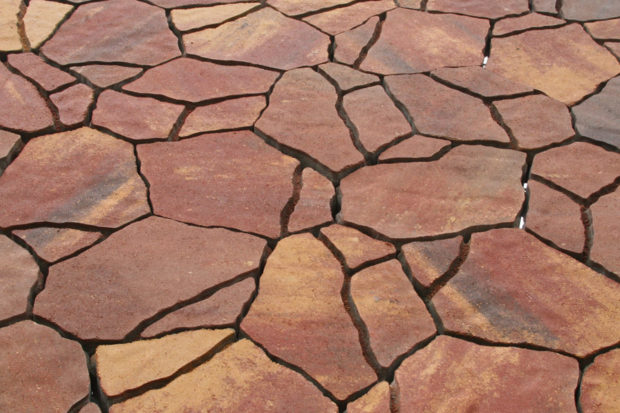
Benefits sandstone:
- Does not absorb moisture;
- It is practically indelible;
- It has a relatively light weight;
- Affordable cost;
- Resistance to temperature differences;
- Easier to process and lay than other breeds;
- High aesthetic qualities;
- Durability and high strength;
TO disadvantages include the difficulty in maintaining the sandstone floor due to its rough surface, as well as low cushioning qualities.
7. Natural pebble floors
Natural pebbles, obtained on the sea coast, is a favorite material of many designers at bathroom decoration. Due to the natural processing, the pebbles have nice rounded shapes and smooth corners. Color palette Natural pebbles are very diverse. It is dominated by natural, calm shades.
TO the benefits pebbles include:
- Massage effect on the feet;
- The ability to lay out whole artistic canvases;
- Durability;
- No need for special care;
- Simplicity of laying;
- Natural and effective flooring.

TO disadvantages include the duration of the styling process, which requires perseverance and painstaking.
8. Expensive and unique stonework for flooring
In addition to such “simple” rocks, designers sometimes use more exclusive and expensive types of stones.Such a finish can rightfully be called “golden”, but the appearance will be at the same level. Often used:
- Onyx - stunningly beautiful translucent stone with barely noticeable colored veins. It is soft and delicate. Scratches quickly appear on its surface. Therefore, it is used either as decorative inserts, or to finish the area where they walk barefoot or in socks. Thanks to its warm shades, it blends perfectly with wood finishes and makes the room sophisticated, but not “cold.”

- Jade - A unique rock of a gray-green hue with rich emerald inclusions and a pronounced texture. Sometimes there are specimens of yellow, brown, dark gray or red. Due to its high resistance to moisture, it is often used to decorate bathrooms, baths, saunas. However, jadeite also looks great in other rooms;

- Coil - more wear-resistant and hard material. A little reminiscent of the color of jadeite, only with a more saturated green component. The material is resistant to temperature changes, but does not tolerate moisture. It has high decorative and aesthetic properties. Fits well in any interiors.
9. What is a "stone carpet"?
Agree, the name is intriguing, but everything is much simpler. Stone carpet is a mix of various mineral particles. Most often composition such is quartz sand, sea pebbles, marble or large marble chips, some semi-precious stones and a transparent polymer. Most of the surface is occupied by sand, which perfectly fills the gaps between larger fractions and strengthens the surface. The finished coating not only looks amazing and unique, it also has increased wear resistance, hardness and strength. Due to the presence of the polymer as a binder component, after its complete hardening, such a floor is absolutely not afraid of moisture.
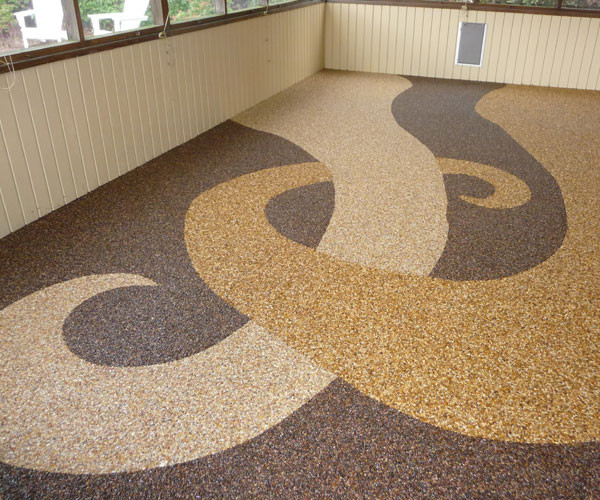
Besides:
- Stone carpet is resistant to chemicals and oils;
- It has anti-slip properties;
- It is absolutely safe for health;
- Easy to clean due to lack of seams and an absolutely smooth surface;
- Does not lose its properties even in the temperature range from -30 to + 70 ° C;
- The installation process is very simple and does not take much time;
- A wide selection of colors.
TO disadvantages applies:
- High price;
- In case of careless operation, scratches, cracks and stubborn spots may occur.
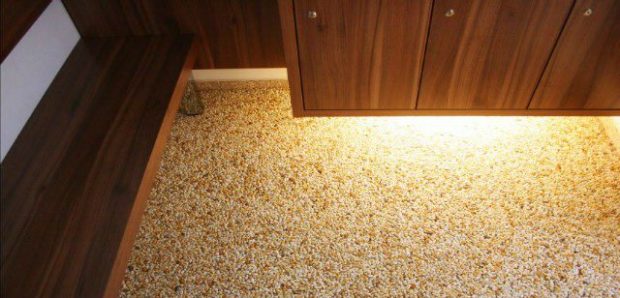
10. The texture of the rock
Not only the color scheme, but also the texture of the material plays an important role in creating the design of a certain room. If we consider the example of natural stone, then you should know that from processing method surfaces depend not only on its aesthetic, but also on its practical properties. After a certain processing, the following types of textures can be obtained:
- Polished - is the most expressive and rich in color. On a smooth surface, not only the unique shade, but also the pattern is most clearly visible. After appropriate processing, objects from the surface are reflected, as if from a mirror. Increased smoothness and reflective properties allow visual increase the area of the room. This is due to the fact that the floor instantly reflects any light, be it the sun's rays or the light from appliances. During polishing, pores on the surface close, after which it becomes less sensitive to moisture. Significant disadvantage The polished floor will have its increased glide. Especially if you spill water on it. Therefore, for wet rooms, this is not only not the best, but also a traumatic coating option. Sometimes tiles with anti-slip stripes are produced. But they already have the wrong look;

- Matte - the surface is pleasant, smooth to the touch. It is clearly visible natural stone pattern.Processing takes place with a gentle method that allows you to maximize maintain the decorative qualities of the breed. But at the same time, the floors will be less slippery when wet. Matte texture is often used to finish floors in the bathroom;
- Sanded - has surface irregularities, the differences of which lie in the range up to 0.5 mm. Grinding occurs in a rather tough, uneven way. Because of this, the color of the stone becomes indistinguishable, homogeneous. In other words, natural beauty is lost. Due to the low aesthetic indicators, stones with a polished surface are most often used for external cladding of steps and floors;
- Artificially aged - A unique processing method allows you to achieve very interesting colors. Soft, porous marble rocks are artificially aged. As a result, its surface takes on incredible shades and becomes more elegant. Such material is usually used as decorative inserts;

- Sandblasting - the optimal processing method in which you can get a wear-resistant, non-slippery surface. In this case, even with the appearance of scratches, they are almost invisible. That is why this practical method has gained the greatest popularity.
11. The format of natural stone for flooring
Depending on the size and handicap of rock, the following types of supplies are distinguished:
- Stone tiles - has the correct geometric shape and smooth surface. The dimensions of the plates can be as standard - 30 × 30, 40 × 40, 45 × 45, etc. - and have individual sizes. Please note that 10 mm thick slabs are usually used for wall cladding, while it is better to use 20 or 30 mm elements as a floor covering;
- Stone slabs - are solid slabs of large sizes and irregular shapes, carved from solid stone blocks. Laying such a material is quite complicated and requires a clear fit. After laying, the floor surface is ground and polished. But it is from the slabs that the most expressive and unusual sex can be laid out;
- Stone mosaic - represents small stone tiles. Their shape can be either rectilinear or asymmetric. Thickness ranges from 4 to 10 mm. Ready-made modules of 20 × 20 cm in size are formed from small fragments, which slightly facilitates the laying process. However, this activity is still very painstaking and laborious.
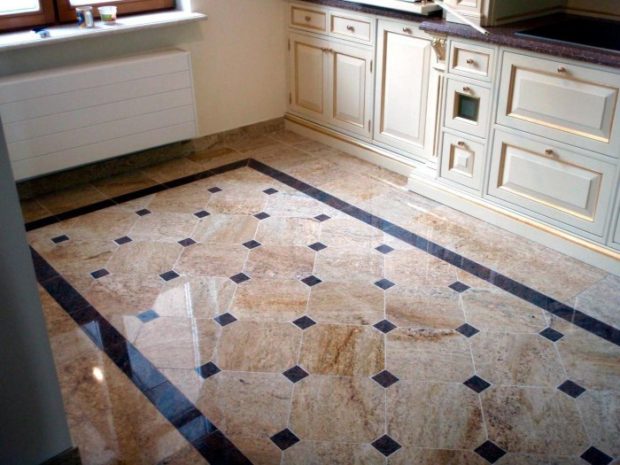
Having resorted to the help of specialists, you can lay out a floor from any kind of stone, depending on your financial capabilities and preferences.
12. Stone floor in various rooms
The stone floor is a completely independent element, which can become a key feature of the entire interior. However, despite this, there are rooms where to do it simply impractical. This is about kids room. Even with the arrangement of a warm floor, this is not quite a good solution. The stone is very hard and traumatic for the child. And if you want to solve this problem with a big soft carpet, then what is the meaning of stone decoration, if it is not visible? In the remaining rooms you have complete freedom of action.
- For living room better saturated color rocks with a pronounced pattern. Pay attention to marble, granite, onyx or a coil. Also, a stone mosaic floor or polished slabs will be a great option. Do not forget about compliance with the general color scheme of the room and the style of its design;
- For hallway more restrained and calm shades and textures will do. Light, plain floors made of stone slabs will look noble;
- IN the kitchen worth focusing on color kitchen setwhich occupies the vast majority of the area. If it is bright and saturated, with glossy facades, then the floor should be dull, neutral, and vice versa;
- For bath rooms are better suited to light rocks, on which soap droplets will be less noticeable. Be sure to choose a stone with an anti-slip surface;
- To equip a stone gender in the bedroom or not - a purely individual matter. But we can say that the recreation area involves the use of softer and warmer materials.
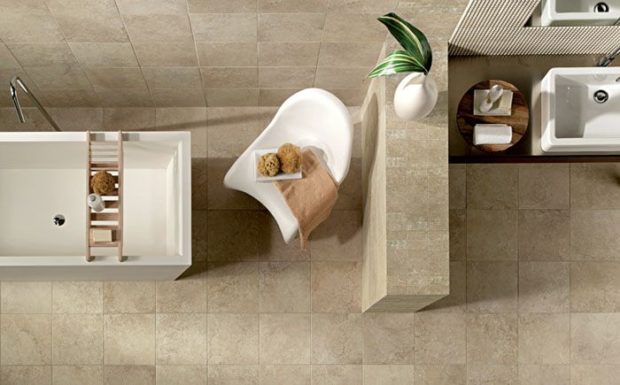
13. Artificial stone as a more affordable facing material
Due to its high cost, not everyone can afford the natural stone finish. But this is not a reason to abandon their desires. Today you can find artificial substitute which is in no way inferior, and sometimes even superior in characteristics to natural material. To the main the benefits can include:
- More affordable cost;
- Less weight;
- Easy installation and handling;
- More convenient transportation.
Facing with artificial stone is carried out in the same way as ordinary ceramic tiles - using adhesive mixture. The finished surface is repairable.
Depending on the composition and method of application, emit three the main groups substitute.
Porcelain Tiles
This material is produced by high pressure vibropressing. In his composition The following materials are included:
- Several grades of clay;
- Feldspar;
- Mineral additives;
- Pigment.
Can say that porcelain tile closer to ceramics or glass, but not stone. It has very high surface hardness, so processing and cutting it at home is very difficult. Not all tile cutters can cope with this task. Therefore, you often have to perform manual adjustment grinder. Porcelain stoneware may have a matte or glazed surface. With the latter it is worth being careful. Although it is heavy-duty, it is prone to chipping off the decorative layer. Porcelain tile is frost-resistant and very durable material.
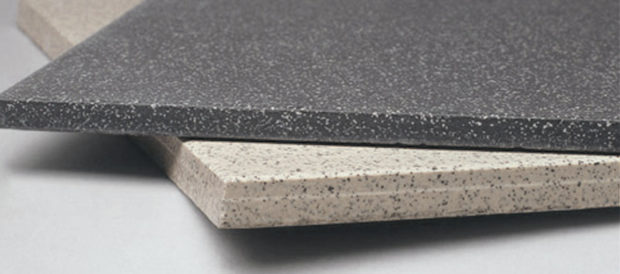
Agglomerates
This is a group of materials that are made of polyester resin, quartz sand, marble chips, limestone, granite chips and coloring additives. Such an artificial stone has an incredibly diverse color palette and can mimic expensive breeds. Such as onyx, malachite, lapis lazuli, marble. However, the strength will be much higher. Agglomerates are able to withstand high subzero temperatures, have good bending and compression strength.
Exposure to direct sunlight is disastrous for them. And the degree of abrasion is much lower than that of natural breeds. In addition, liquids containing acids in their composition can leave irreducible spots on the surface. Also unsuitable agglomerates and for laying over a warm floor. The polyester resin in their composition when heated begins to release harmful substances. Agglomerates specifically designed for floor cladding are most often made from stone chips and cement binders. The method of vibration compaction allows you to get a coating that is much harder than natural stone.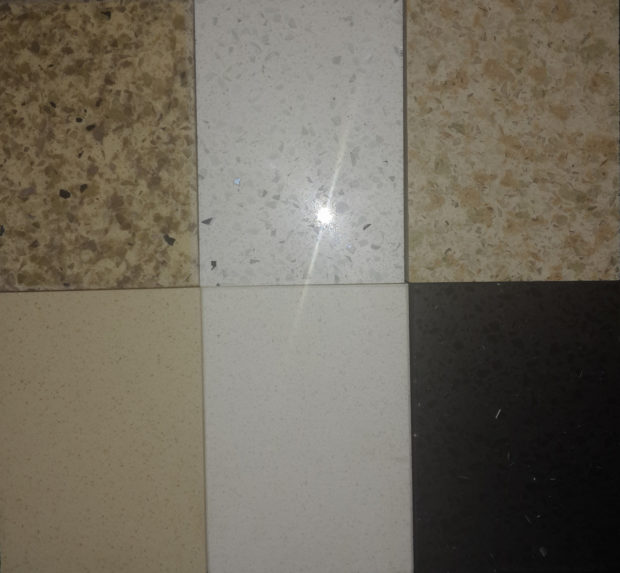
Artificial Concrete Stone
This is the most common type of substitute, which is made from ordinary cement, sand, fillers in the form of pumice, expanded clay or ceramic chips, plasticizer, reinforcing additives, water-repellent substances and pigment. The resulting material can be used for both internal and external decoration.
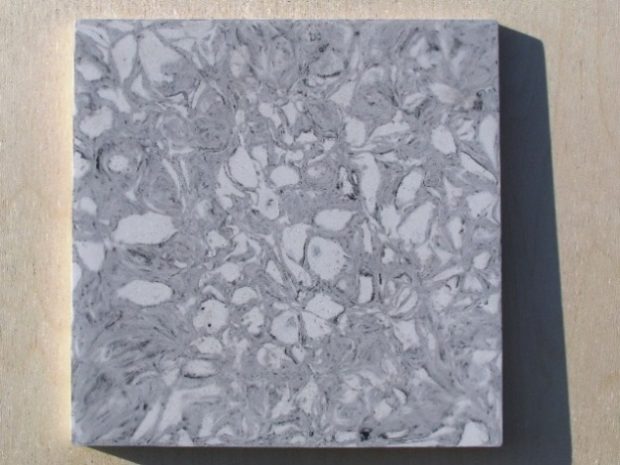
14. The technology of laying stone floor
Ideally, laying a stone floor is best entrusted to specialists. Especially when it comes to some grandiose and complex project. However, if you chose ordinary stone slabs as a coating, then it is quite possible to lay them yourself. Main stages The following works:
- Foundation preparation. This process is responsible and binding. The base must be firm, even and clean. Best done cement screedif the curvature of the floor is decent.For this, metal beacons are installed along the entire length of the room, which are set in level and fixed with a solution. Then, a finished screed is poured between the lighthouses and is leveled using the rule. Please note that immediately after hardening, do not cover the screed with stone. According to the instructions, it should stand for a while;
- When your floor is level, you need to carefully primerbefore removing dust;
- Now you can pre-lay the stone slabs on the floor and immediately mark the places of cutting;
- Depending on the breed chosen, fitting can be quite difficult. There are two ways out - either rent a professional cutting machine. What to do is not advisable if you see it for the first time in your life. Or bring tiles that need to be trimmed to the appropriate company, which is engaged in stone processing;

- When all the tiles are ready for laying, you can start mixing adhesive mixture. Here you need to be careful. Wrong glue choice can lead to a discoloration of the tiles irrevocably! This is especially true for porous materials, which during drying can “draw” glue into themselves and acquire a gray shade. Be sure to consult a specialist about this;
- Further technology is similar. laying regular tiles;
- After the glue has dried, stone floors should not be loaded immediately. It is necessary to give them time for natural shrinkage.
15. Stone Floor Care Tips
Stone floors, with proper care and handling, may serve more 50 years. There are no special requirements, but you should adhere to the following simple recommendations:
- For cleaning, it is best to use mild detergents that do not contain alkalis, chlorine, acids and abrasives;
- In no case should you rub any stains with a metal washcloth in an attempt to eliminate them;
- It is best to wash the floor with warm soapy water, and then rinse with clean warm water and wipe dry with a soft cloth;
- If a coloring or aggressive liquid gets on the floor, immediately remove it with a damp washcloth;
- No need to drag or knock furniture on the stone floor. So you will inevitably leave scratches;
- It is best to stick soft rubber bands or special protective pads on furniture legs.

Such simple actions will help you maintain the original appearance of your stone floor for many years and not regret a significant investment.


